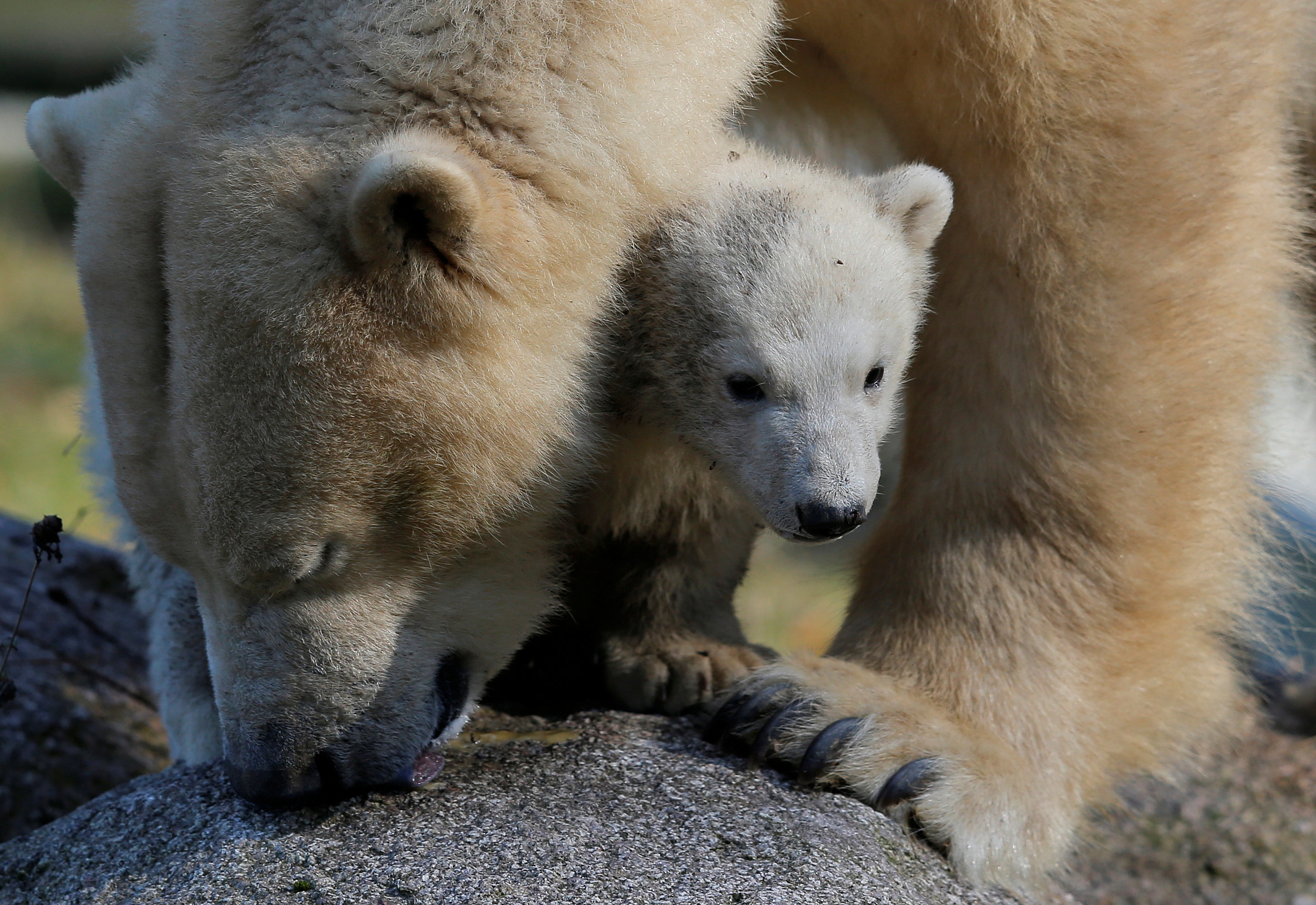Here’s what to read this International Polar Bear day

In his out-of-print gem “Bears and Men: A Gathering,” the poet and novelist William Mills relates an Eskimo legend that, with sea ice shrinking and polar bears starving, is especially poignant. In it, the raven created women and men, and plants and animals for them to eat. Then he created the polar bear, “because he felt that if he didn’t create something to make men afraid, they would destroy everything he had made to inhabit the earth.”
On International Polar Bear Day Feb. 27, let us celebrate the charismatic carnivore with a few books for discerning (and concerned) readers. This Arctic roundup includes a biological overview, a graphic novel, a travelogue, a pictorial anthology and a children’s book and all are available through your local bookseller.
For people curious about the lives and ecology of polar bears but intimidated by technical tomes, Andrew Derocher’s “Polar Bears: A Complete Guide to Their Biology and Behavior” (2012) is heaven sent. Helped by Wayne Lynch’s color photos, the eminent Canadian wildlife biologist puts the bear in its natural context, outlining its role as an apex predator — the largest carnivore on land. Chapters on polar bear evolution and Arctic marine ecosystems show that it owes much to the sea — hence its classification as a marine mammal.
Drawing on fieldwork and an extensive literature, Derocher even explores arcane topics such as molting and vocalizations. Written for laypersons and with sidebars scattered throughout, “Polar Bears” offers just enough information to whet readers’ appetites for more.
Children’s bear books
In children’s books about polar bears, which are flooding the market, the animal’s protective parent-offspring bond and the cubs’ need to explore are featured prominently, allowing children to easily identify with the bears.
Unfortunately, the books often also humanize their infant character. More naturalistic stories incorporate biological information — and then there are retellings of Inuit myths such as “The Giant Bear” (2012). Fetchingly illustrated by Eva Widermann, it is based on a narration by Native storyteller Jose Angutingunrik from Nunavut. It tells of an ice-clad, monstrous bear — the nanurluk — that lives under the sea ice and stalks an old couple. Despite its gruesome subject, the book offers real insights into Arctic survival and the minds of people who’ve thrived there for millennia.
A bedtime story for grown-ups, T. Cooper’s graphic novel (and animated short) “The Beaufort Diaries” (2010) follows a polar bear exiled from Alaska into “the wilds of Hollywood.” In this riff on Kotzwinkle’s satirical parable “The Bear Went Over the Mountain,” the protagonist also makes it big in “LaLa Land,” rising to stardom and hobnobbing with a famous real-life actor who has taken on global warming as his cause célèbre. Reaching beyond naive anthropomorphizing, the animal’s personification in Cooper’s tale functions as did once Aesop’s and La Fontaine’s: It mirrors our own society, our own foibles.
Vivid images, essays
Seattle’s independent publisher Mountaineers Books is known for large-format pictorials that are much more than mere “coffee-table books.” Many of their titles focus on Arctic landscapes and wildlife (and one even contains a CD of birdsongs). These books showcase sublime photography and writing by different contributors, combined with environmental advocacy. They remind us of American heirlooms — places and life forms — that deserve our attention and protection. Photographer Steven Kazlowski’s, “The Last Polar Bear” (2008) contains 200 photos he took over a period of six years. Essays by luminaries such as the former anthropologist Richard Nelson and wildlife biologist Stephen C. Amstrup paint a vivid picture of the white bear’s life and situation.
The journalist, firefighter, and paramedic Zac Unger’s travelogue-cum reportage “Never Look a Polar Bear in the Eye” (2013) compels with details about the Churchill, Manitoba, scene. Planeloads of wildlife enthusiasts seek out this “Polar Bear Capital of the World” every year, and Unger depicts them and the locals and the furry objects of their desire with verve and humor. Some residents, according to him, carry a shotgun when they push a baby stroller through town. Unger, his wife and their three children moved from Oakland, California, to make Churchill their temporary home — the writer’s quest for mini-marshmallows to feed to his kids was the least of adventures in this remote, small community.
Michael Engelhard is the author of the essay collection, “American Wild: Explorations from the Grand Canyon to the Arctic Ocean,” and of “Ice Bear: The Cultural History of an Arctic Icon,” an excerpt of which was published here last year. Trained as an anthropologist, Engelhard lives in Fairbanks and works as a wilderness guide in the Arctic.